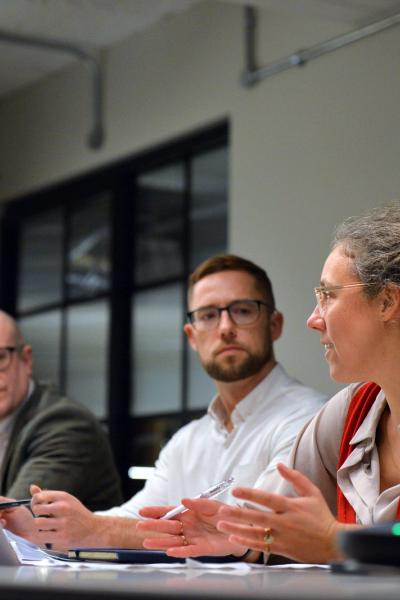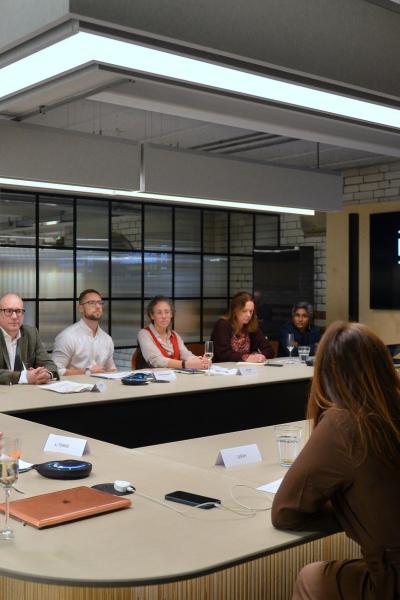Can the UK Net Zero Carbon Buildings Standard (UK NZCBS) really be achieved?
It’s a question we’ve been exploring – first through our joint research report with Price & Myers and Max Fordham and more recently in a lively roundtable hosted by Material Source studio in Manchester. The discussion brought together voices from across the built environment to consider what ‘achievable’ really means.
The discussion reinforced what we believe at Buttress: the NZCBS isn't just a benchmark, it's a shared framework that demands cross-industry collaboration. Achieving net zero relies on open dialogue between everyone across the built environment.
With Version 1 of the Net Zero Carbon Buildings Standard due for publication in early 2026, we examine further what our key takeaways from the roundtable conversation are.
Closing the embodied carbon gap
Current industry averages for embodied carbon remain almost double the targets projected for 2028. This underlines the urgency of reducing material use and rethinking structural design from first principles.
Net zero carbon aligned buildings
The UK doesn’t yet produce enough renewable energy, and buildings can play a key role in changing that - for example, by using roof space for solar generation. The aim is for buildings to contribute to the UK’s overall journey to net zero.
Integrity in whole life carbon modelling
Whole life carbon modelling is still largely unregulated, with no formal standards or qualifications. Without care, the industry risks a race to the bottom – lower fees leading to less rigour, more shortcuts, and results that look good on paper but don’t reflect reality. That undermines meaningful progress and the credibility of the data we rely on.
The need for regulatory momentum
Regulation is essential to drive real change. Until then, progress will rely on early adopters applying the Standard’s best practice principles and demonstrating what’s possible. The Standard is designed to support those leading the way and to build momentum for wider adoption.
Collaboration and education
Achieving net zero relies on early, integrated teamwork between clients, architects, and engineers. Decisions made at the concept stage often determine most of a building’s lifetime carbon impact.
Education and awareness are equally vital. Cost-saving choices made without understanding their wider effects can lead to higher embodied carbon, shorter material lifespans, and greater operational costs. Informed decisions at the outset lead to better, more sustainable outcomes.
Engagement with innovative materials
As architects, we work with a wide range of materials and specification is critical when it comes to upfront embodied carbon. Engagement with new and innovative materials which actively aim to reduce upfront carbon is both an exciting and important process. We must constantly strive to champion sustainable products within our design process. Marginal gains can often add up to quite sizeable changes in embodied carbon.



For Buttress, the UK Net Zero Carbon Buildings Standard represents both a challenge and an opportunity. We believe that transparent collaboration, design innovation, and evidence-based decision-making are essential to achieving a truly sustainable built environment.
If you want to talk to us more about how we can help advise on your project when it comes to the Net Zero Carbon Buildings Standard, please get in touch with Paul Nelson via contact@buttress.net